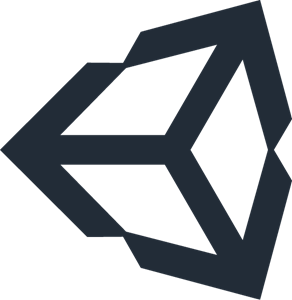
Amidst the ever-evolving technological landscape, simulation software has ascended as an indispensable asset across diverse sectors – spanning engineering, healthcare, gaming, and education. In the year 2023, the fervor for cutting-edge simulation solutions is on an upswing, primarily fueled by the imperative for economical testing, training, and adept issue resolution across industries. In this article, we embark on an illuminating expedition into the realm of the top 11 simulation software platforms of 2023. Our voyage unveils their distinctive attributes, varied applications, and profound influence on the tapestry of technology. Join us as we navigate this intriguing simulation landscape.
What is Simulation Software?
Simulation software is a powerful tool that replicates real-world processes or systems in a virtual environment, enabling users to study and manipulate them without real-world consequences. It functions by imitating the behavior of real systems or phenomena through mathematical models and algorithms.
Simulation software finds applications in a multitude of industries, from engineering and healthcare to gaming and education. It allows engineers to test the performance of products, architects to visualize buildings, and healthcare professionals to refine medical procedures in a risk-free virtual space.
1. Ansys

Ansys remains a stalwart in the simulation software industry, providing engineers and designers with a comprehensive suite of tools for finite element analysis, computational fluid dynamics, and electromagnetics simulation. Its ability to simulate complex physical behaviors and optimize designs makes it indispensable for industries like aerospace, automotive, and manufacturing.
Pros: Exceptional accuracy in simulating complex physical behaviors, extensive library of materials, and robust optimization capabilities.
Cons: Steep learning curve, high licensing costs, and resource-intensive simulations may require powerful hardware.
2. Simulink

Simulink, developed by MathWorks, is a powerful simulation environment used extensively in control systems and signal processing. Its graphical modeling approach simplifies the creation of dynamic systems, making it a go-to choose for engineers and researchers working on everything from robotics to renewable energy systems.
Pros: User-friendly graphical interface, seamless integration with MATLAB, and a vast community of users for support.
Cons: Limited 3D simulation capabilities, better suited for control systems than other domains, and can be expensive.

bud!
3. COMSOL Multiphysics

COMSOL Multiphysics stands out for its versatility, allowing users to simulate coupled physics phenomena. From heat transfer and structural mechanics to acoustics and chemical reactions, COMSOL provides a unified platform for multiphysics simulations, catering to industries like healthcare, electronics, and environmental engineering.
Pros: Versatile multiphysics capabilities, user-friendly modeling environment, and customizable physics modules.
Cons: High licensing costs, resource-intensive, and may require scripting for complex simulations.
4. Autodesk Simulation

Autodesk offers a suite of simulation tools that integrate seamlessly with its design software, such as AutoCAD and Inventor. This integration streamlines the simulation process, making it ideal for architecture, construction, and product development, where design changes can be easily tested for performance and safety.
Pros: Integration with Autodesk design software, real-time collaboration, and a range of simulation types, including structural and thermal.
Cons: Costly software and may not be as feature-rich as specialized simulation tools in certain domains.
5. Unity

Unity has transcended the gaming world and entered diverse fields, including architecture, training, and healthcare. Its real-time 3D development capabilities enable immersive simulations, making it a top choice for creating interactive training environments, virtual tours, and more.
Pros: Real-time 3D development, cross-platform compatibility, and a vast asset store for content.
Cons: May not offer the depth of simulation required for highly specialized industries, and the learning curve can be steep for beginners. This article mentions your favorite hats at super low prices. Choose from same-day delivery, drive-up delivery or order pickup.
6. Simio

Simio specializes in discrete event simulation, making it a crucial tool for optimizing complex systems, such as manufacturing processes and supply chains. Its user-friendly interface and 3D animation features simplify the modeling and analysis of discrete events, aiding decision-makers in improving efficiency.
Pros: Excellent discrete event simulation capabilities, 3D animation, and object-oriented modeling.
Cons: Less suitable for continuous simulations, limited features in the free version, and not as well-known as some competitors.
7. Any Logic

Any Logic distinguishes itself with its multimethod modeling approach, allowing users to combine discrete event, system dynamics, and agent-based modeling in a single platform. This flexibility suits industries like healthcare, logistics, and transportation, where multiple factors interact to create complex scenarios.
Pros: Multimethod modeling, agent-based, system dynamics, and discrete event capabilities in one platform, suitable for complex scenarios.
Cons: Complex learning curve due to its versatility, and licensing costs can be high for some users.
8. OpenFOAM

Open-source enthusiasts favor OpenFOAM for its robust computational fluid dynamics capabilities. It empowers users to customize simulations for various fluid flow problems, from aerodynamics in aerospace to blood flow in biomedical research.
Pros: Open-source and highly customizable for computational fluid dynamics simulations, with a strong community.
Cons: Requires expertise in computational fluid dynamics, lacks some user-friendly features, and may not cover as many domains as commercial software.

bud!
9. Arena

Arena excels in simulation optimization and experimentation. It is widely used in manufacturing and supply chain management to analyze and enhance processes. With Arena, businesses can make informed decisions to reduce costs and improve performance.
Pros: Specialized in simulation optimization and experimentation for manufacturing and supply chain management.
Cons: May not be suitable for broader simulation applications beyond its niche.
10. Gazebo

Gazebo is an open-source robot simulation software used extensively in robotics research and development. It provides a realistic environment for testing robot algorithms, making it a valuable tool for academia and industry.
Pros: Open-source robot simulation for robotics research, realistic physics, and extensive robot models available.
Cons: Focused mainly on robotics and may not offer the same versatility as general-purpose simulation software.
11. SIMUL8

SIMUL8 specializes in process simulation and optimization. Its user-friendly interface and powerful analytical capabilities make it suitable for healthcare, manufacturing, and service industries, helping organizations enhance efficiency and customer satisfaction.
Pros: User-friendly interface for process simulation and optimization, ideal for healthcare, manufacturing, and service industries.
Cons: May not be as suitable for industries with complex multiphysics simulations.
Conclusion
In the constantly shifting landscape of technology, simulation software stands as a dynamic force, perpetually advancing and offering ingenious solutions to intricate challenges spanning a multitude of industries. The top 11 simulation software tools in 2023, thoughtfully explored in this blog, serve as a testament to the astonishing array of applications and capabilities these platforms bring to the fore. Be it streamlining intricate manufacturing processes, conceptualizing groundbreaking products, or crafting captivating immersive virtual experiences, these simulation solutions arm professionals and researchers with the discerning insights required to navigate uncharted territories. As we chart our course forward, these simulation instruments are poised to be the bedrock upon which the future of technology and industry is intricately woven.
